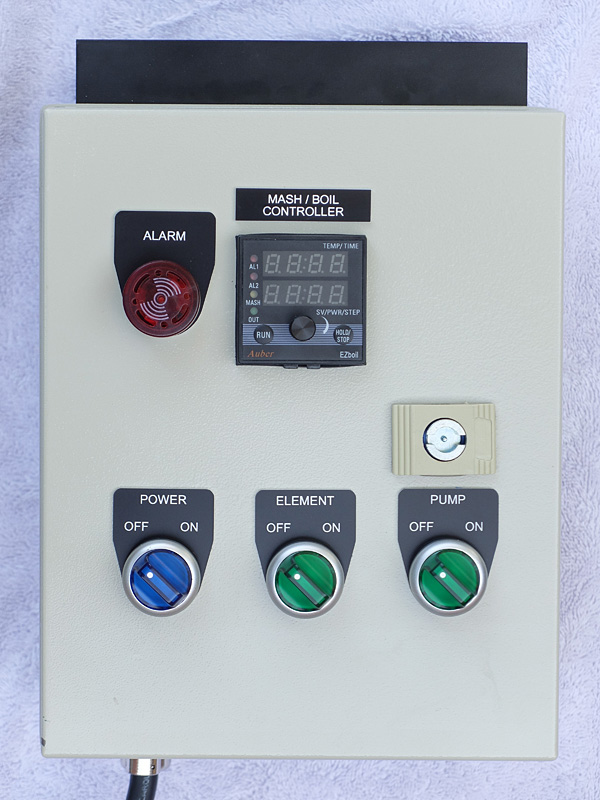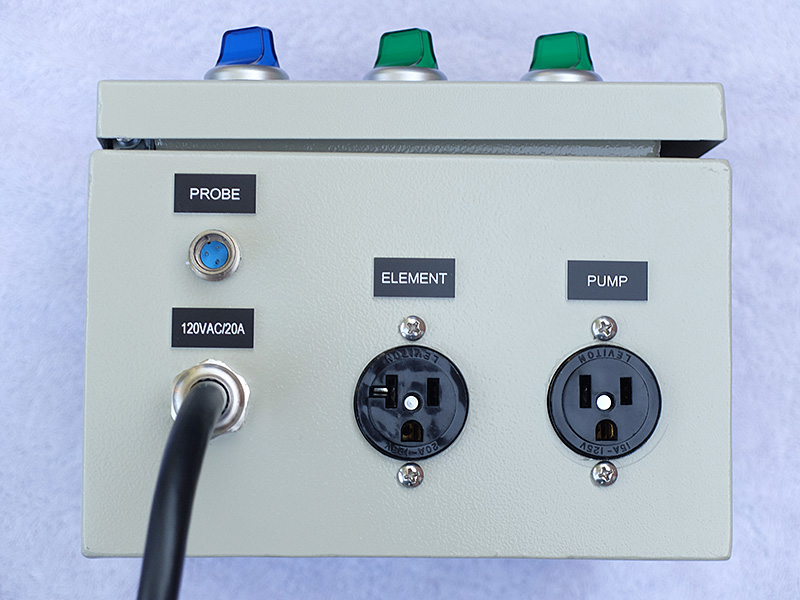Smellyglove
Well-Known Member
- Joined
- May 17, 2013
- Messages
- 2,807
- Reaction score
- 807
I got it yesterday. I've been working 14hr days the last days so I haven't been able to fully test it though.
However. I installed it in my panel and did a get-to-know-it test, doing four steps, held for 10 minutes each, with 10C increments.
It worked flawlessly out of the box. No need to autotune or anything. Plug it in and let it play.
But. There is one thing I didn't understand, it's not mentioned in the updated user manual, if it is I didn't see it.
After reaching next set temp, it was holding that temp for several minutes, before it beeped to tell me that the timer for that step has started. So sort of a delay on the timer for when it starts to count. I mailed Auberins about this, but I don't expect an answer until monday.
That function, if it actually is a function was pretty handy though. Since the herms is up to the next temp pretty fast, but the mash tun will naturally lag behind a bit, It didn't start the next step timer until my mash tun was close to the actual set temp. I do no sparge, so I use way more water than those who sparge, so I guess with a normal sparge setup the mash temp would be pretty much on par with the set temp, when the timer for the next step would start.
If it's possible to tune this "delay", that would be great. As pr now I understood that I need to add +5 minutes to each mash step since the EZ started the timer for each step about five minutes before my mash tun was actually at the set temp. This test was done with plain water though. An actually mash will most likely differ somewhat.
And, I used a Sestos before, and tuned it to overshoot slightly during the ramps, just to get the temp in the mash tun up faster, or else the herms would take it easy for the last few degrees, so the mash tun would take several minutes to get to set temp from something like 2C from desired temp..if that made any sense. Out of the box the EZ was spot on, never overshot, so to get the mash tun up to set temp took longer than the Sestos. I have asked them this too, if it's possible to make it overshoot the ramps, slightliy, then let it stabilize. If there's no setting for it it's possible to switch the algorithm to a straight PID-algorithm, where I guess I can tune it to overshoot by a degree or two during ramps.
Easy to program, that push and turn knob is excellent comparing to just buttons as the Sestos have. Although I must say I could wish the display was nicer, it seems a bit "pixelated", but no biggie. The extra functions I asked for are really needed, for me at least.
All in all, very happy with the first test. And it doesn't feed my fake OCD as it doesn't have decimals either
However. I installed it in my panel and did a get-to-know-it test, doing four steps, held for 10 minutes each, with 10C increments.
It worked flawlessly out of the box. No need to autotune or anything. Plug it in and let it play.
But. There is one thing I didn't understand, it's not mentioned in the updated user manual, if it is I didn't see it.
After reaching next set temp, it was holding that temp for several minutes, before it beeped to tell me that the timer for that step has started. So sort of a delay on the timer for when it starts to count. I mailed Auberins about this, but I don't expect an answer until monday.
That function, if it actually is a function was pretty handy though. Since the herms is up to the next temp pretty fast, but the mash tun will naturally lag behind a bit, It didn't start the next step timer until my mash tun was close to the actual set temp. I do no sparge, so I use way more water than those who sparge, so I guess with a normal sparge setup the mash temp would be pretty much on par with the set temp, when the timer for the next step would start.
If it's possible to tune this "delay", that would be great. As pr now I understood that I need to add +5 minutes to each mash step since the EZ started the timer for each step about five minutes before my mash tun was actually at the set temp. This test was done with plain water though. An actually mash will most likely differ somewhat.
And, I used a Sestos before, and tuned it to overshoot slightly during the ramps, just to get the temp in the mash tun up faster, or else the herms would take it easy for the last few degrees, so the mash tun would take several minutes to get to set temp from something like 2C from desired temp..if that made any sense. Out of the box the EZ was spot on, never overshot, so to get the mash tun up to set temp took longer than the Sestos. I have asked them this too, if it's possible to make it overshoot the ramps, slightliy, then let it stabilize. If there's no setting for it it's possible to switch the algorithm to a straight PID-algorithm, where I guess I can tune it to overshoot by a degree or two during ramps.
Easy to program, that push and turn knob is excellent comparing to just buttons as the Sestos have. Although I must say I could wish the display was nicer, it seems a bit "pixelated", but no biggie. The extra functions I asked for are really needed, for me at least.
All in all, very happy with the first test. And it doesn't feed my fake OCD as it doesn't have decimals either


















































![Craft A Brew - Safale S-04 Dry Yeast - Fermentis - English Ale Dry Yeast - For English and American Ales and Hard Apple Ciders - Ingredients for Home Brewing - Beer Making Supplies - [1 Pack]](https://m.media-amazon.com/images/I/41fVGNh6JfL._SL500_.jpg)











